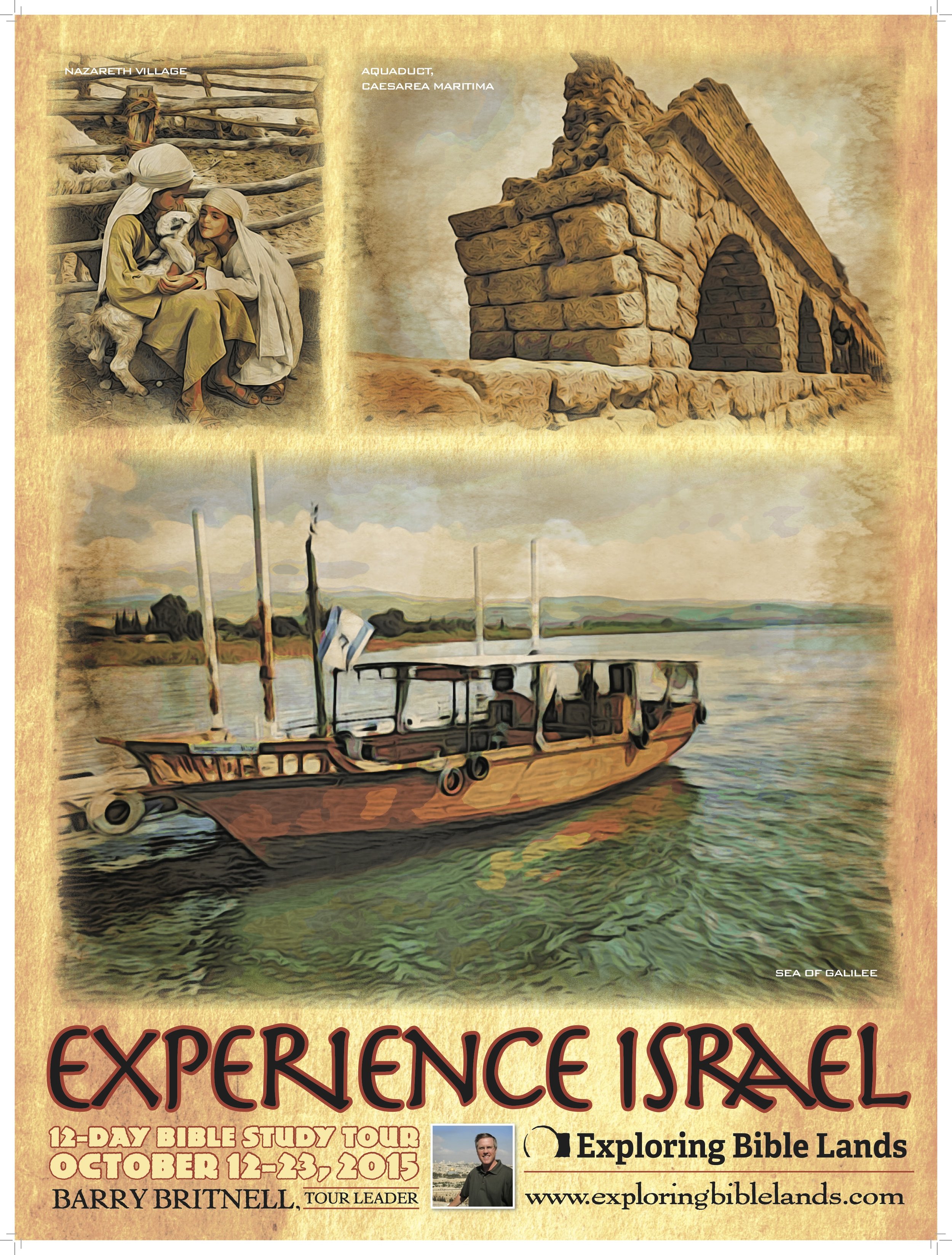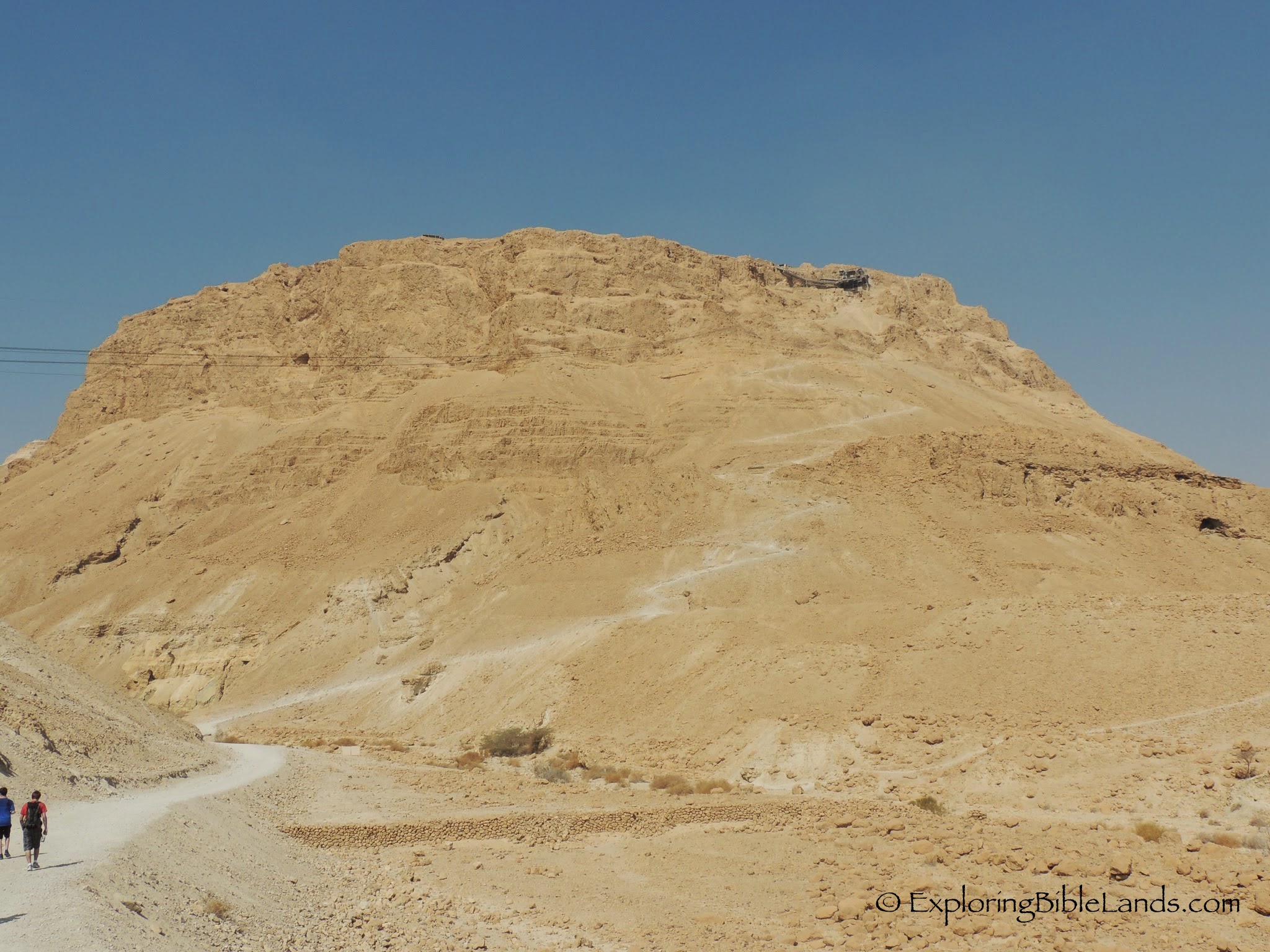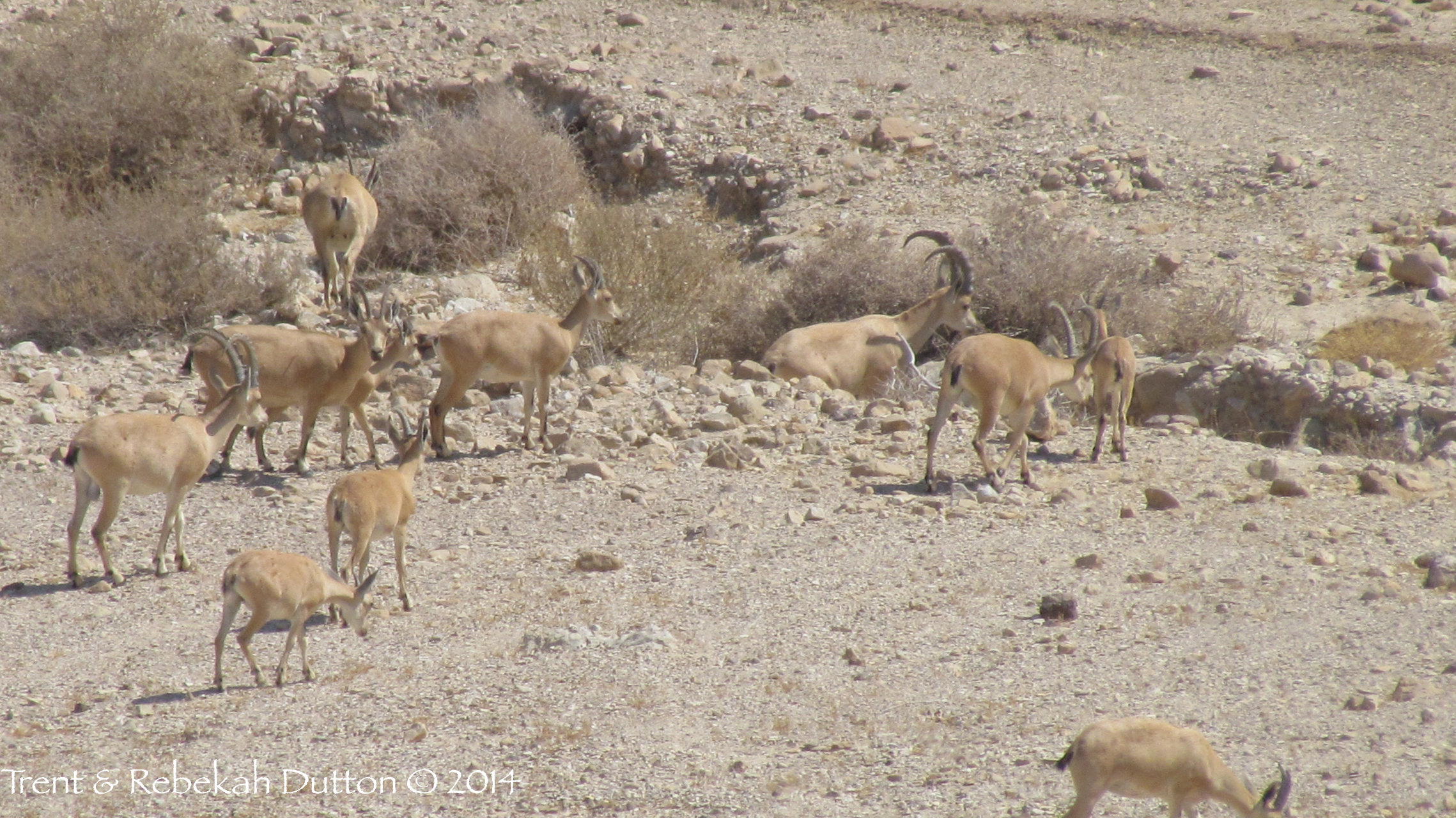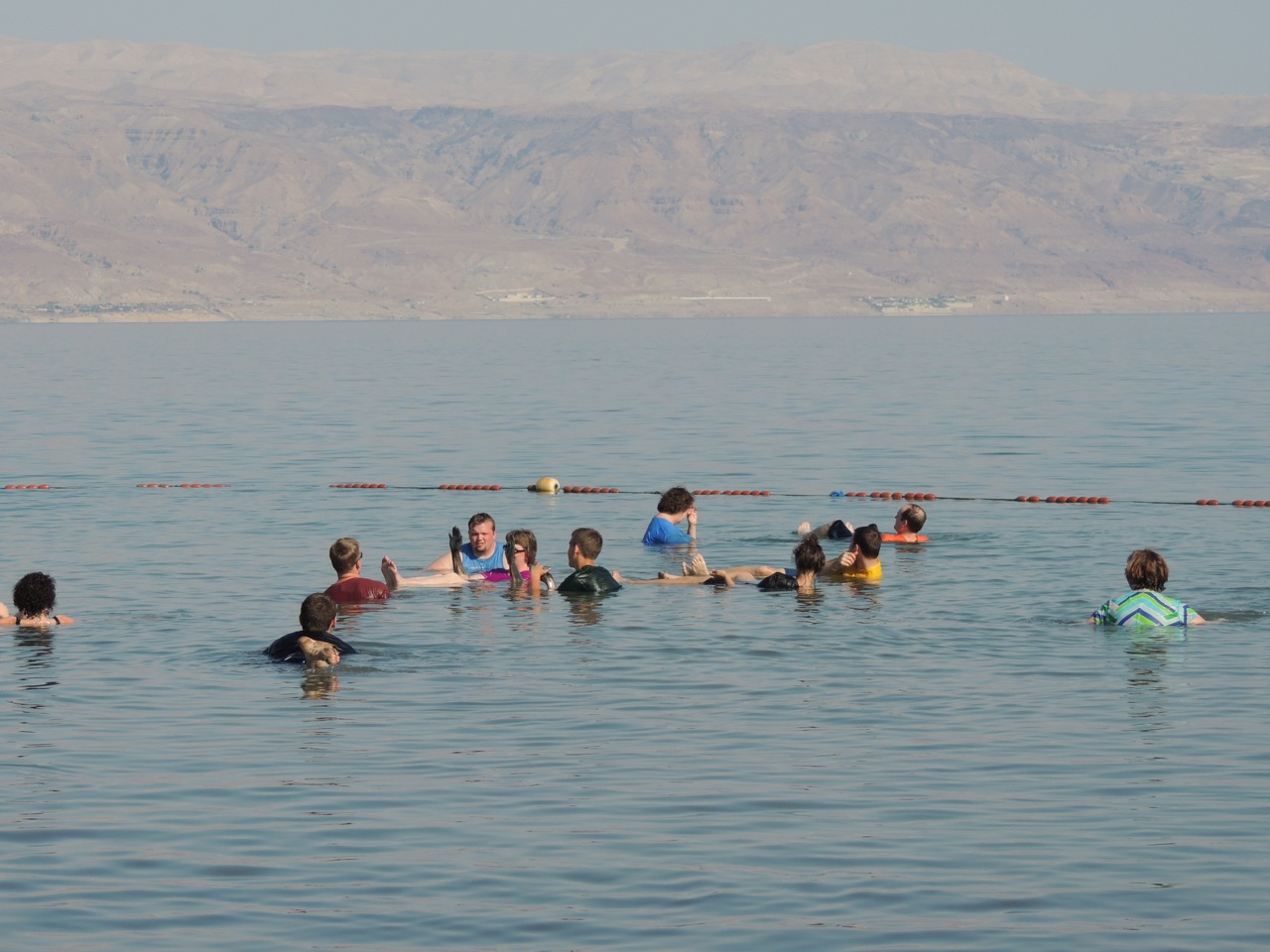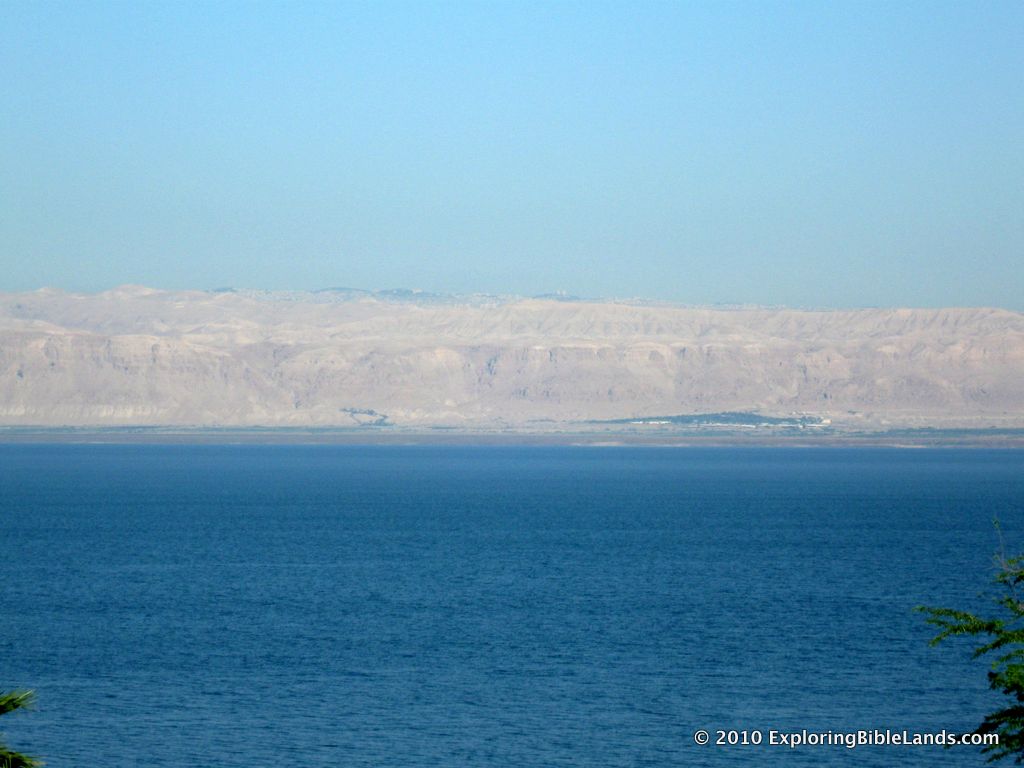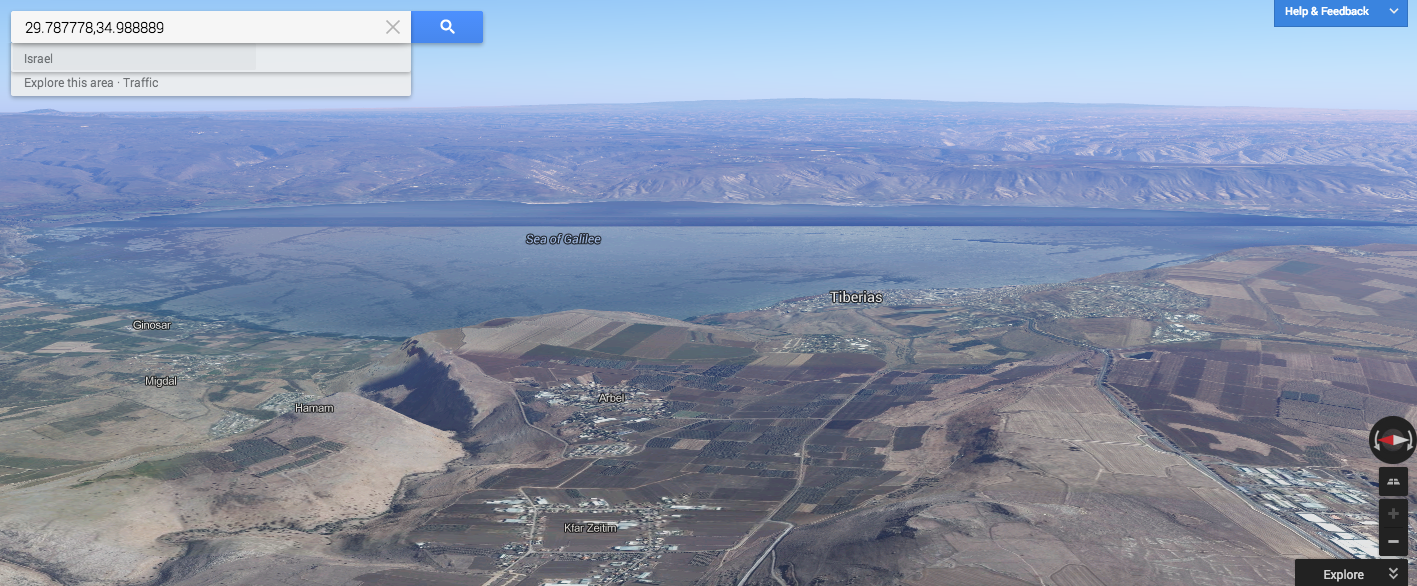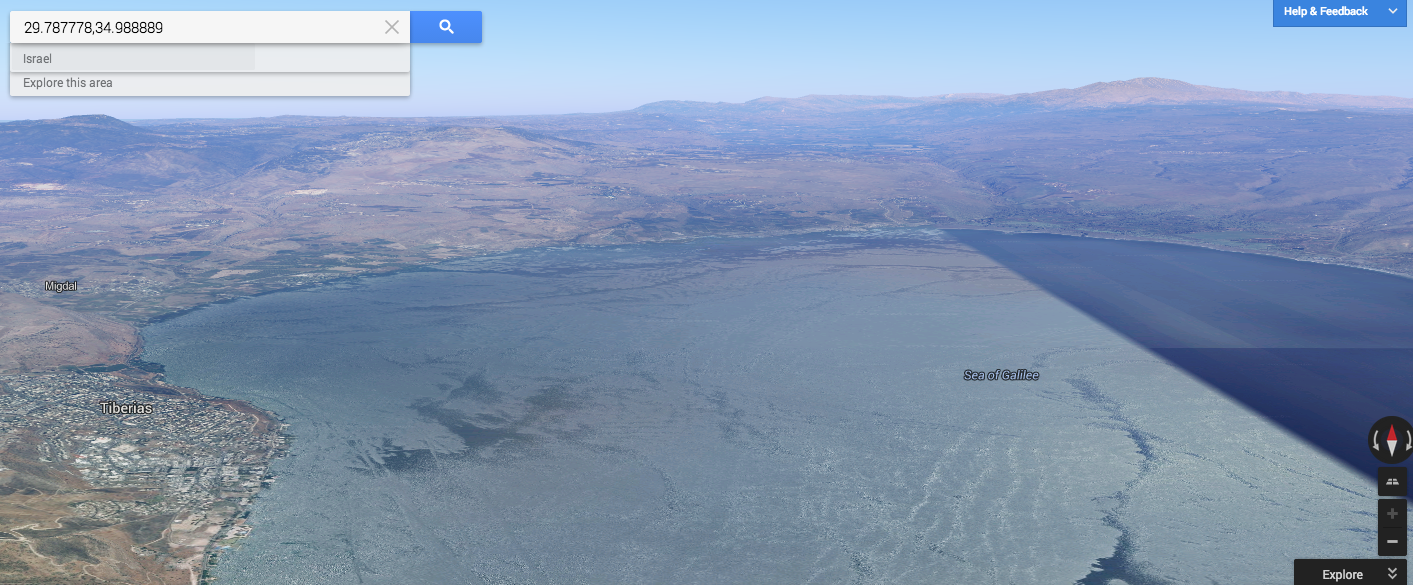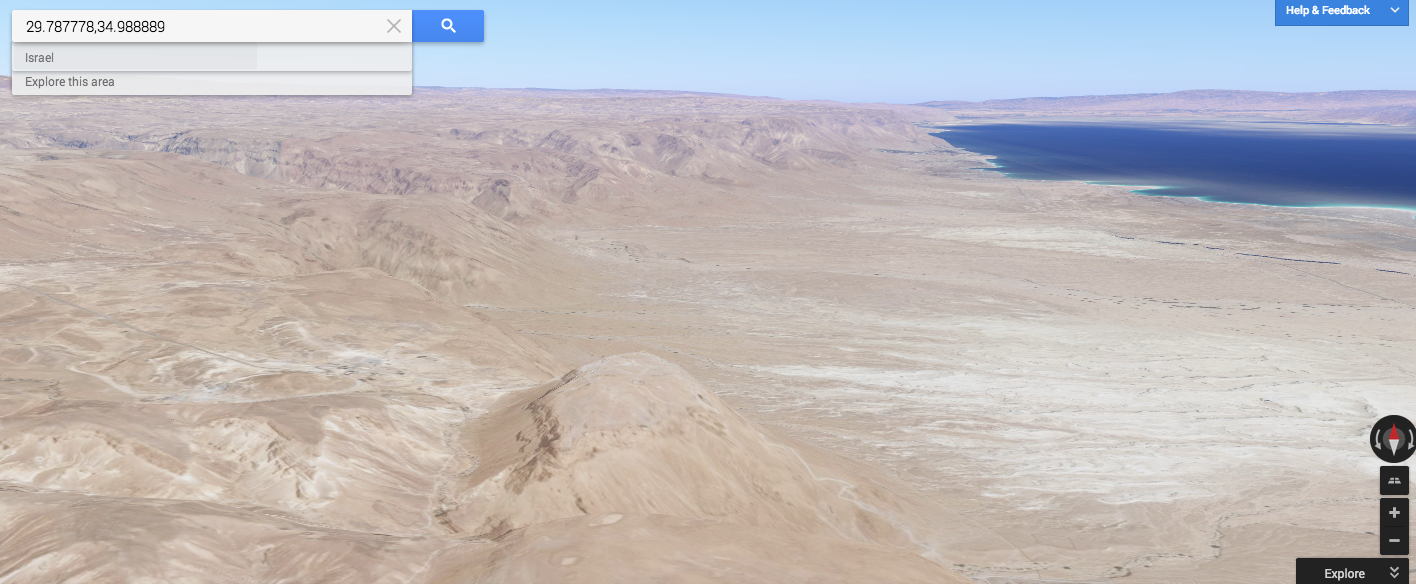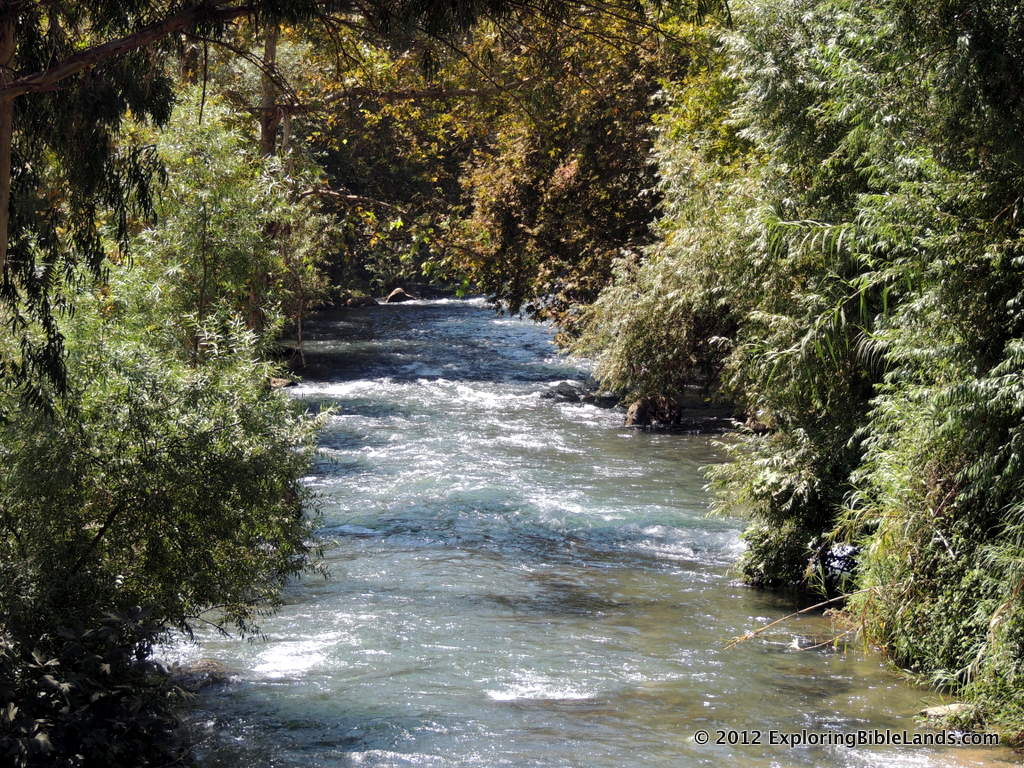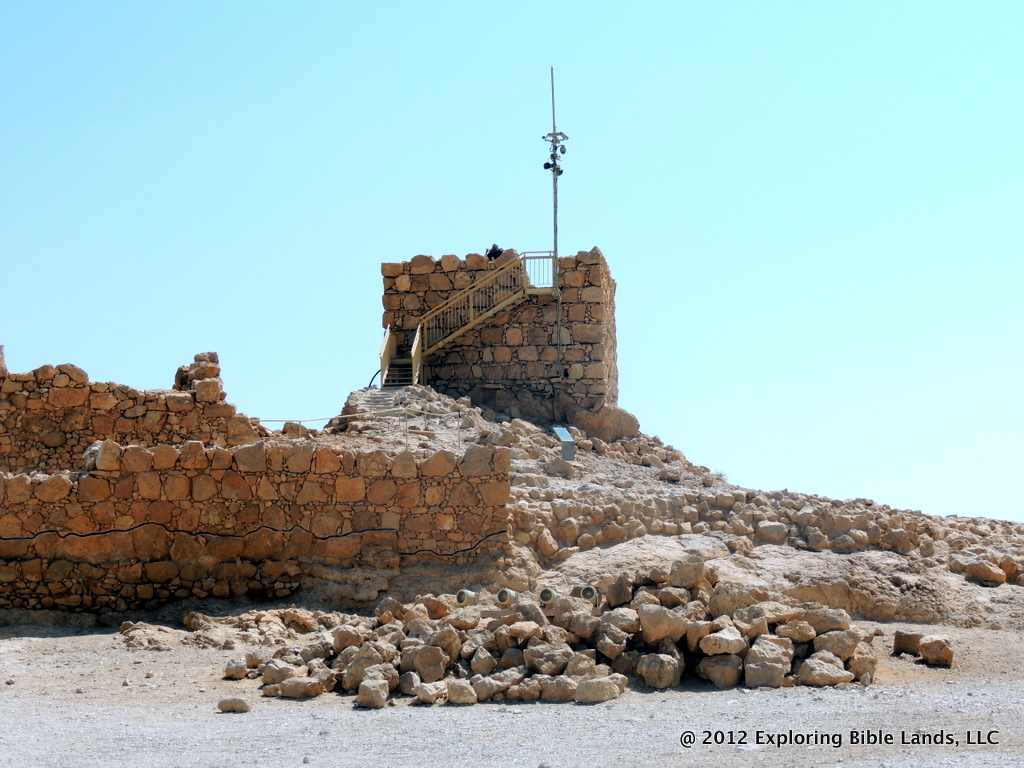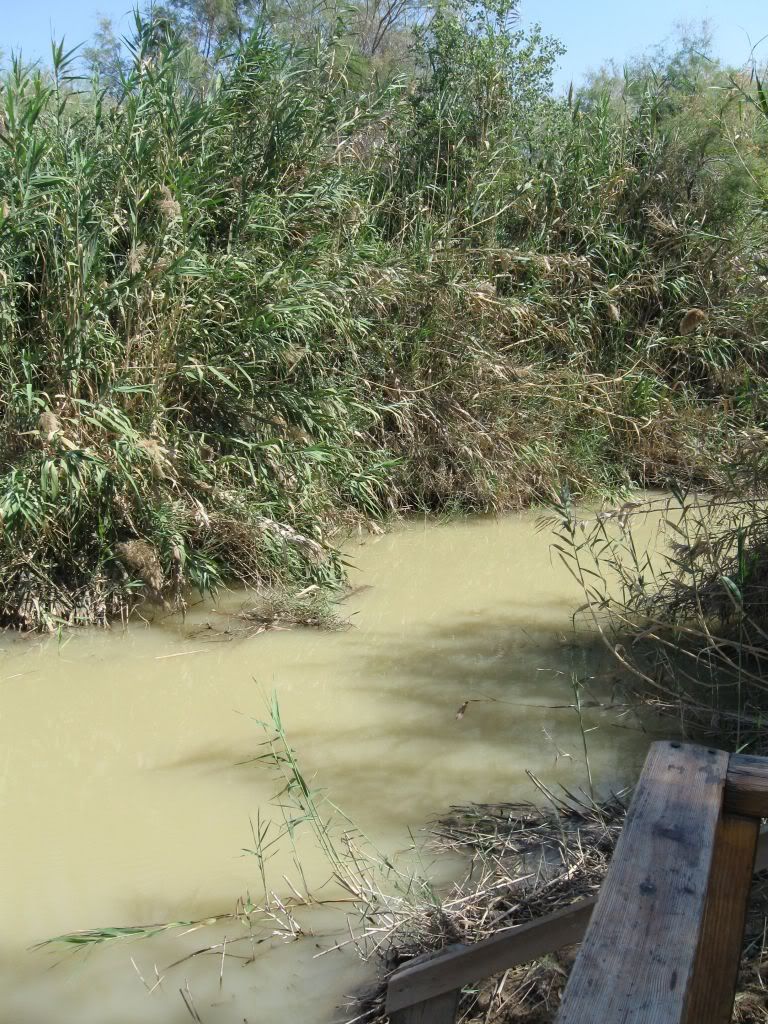Earlier this week, Melanie Lidman wrote an excellent article that was published in Times of Israel about the declining water in the Dead Sea. I have written about this situation a number of times in my journal. I even briefly mentioned it in Episode 3 of Appian Media's "Following the Messiah" series when we visited the traditional baptismal site of Jesus.
In the article Ms. Lidman references the changes to Highway 90, which runs along the western side of the Dead Sea. About three years ago, potholes developed around the bridge near En Gedi. Repairs to the bridge pillars were attempted, but the damage to the surrounding ground was too severe. The road was eventually rerouted and roundabouts were inserted.
I have driven over this new road a number of times. But, last June, I was able to climb up above En Gedi and see the whole area for myself. The picture at the top of this post was my view from that vantage point. I have put a red circle around the bridge that was mentioned in the article and which is no longer in use. The En Gedi Visitor Center is in the bottom left and if you look carefully, you can see the new road as it leaves the shore of the Dead Sea and bypasses the bridge.
The other interesting feature of note is the presence of trees and shrubs in the picture. This is the result of water that continually flows through the valleys of the Judean Wilderness. This water is collected and drains through this area, feeding the local vegetation. It is no wonder why David ran to this area while he was being pursued by King Saul. He needed water...and that could easily be found at En Gedi.





